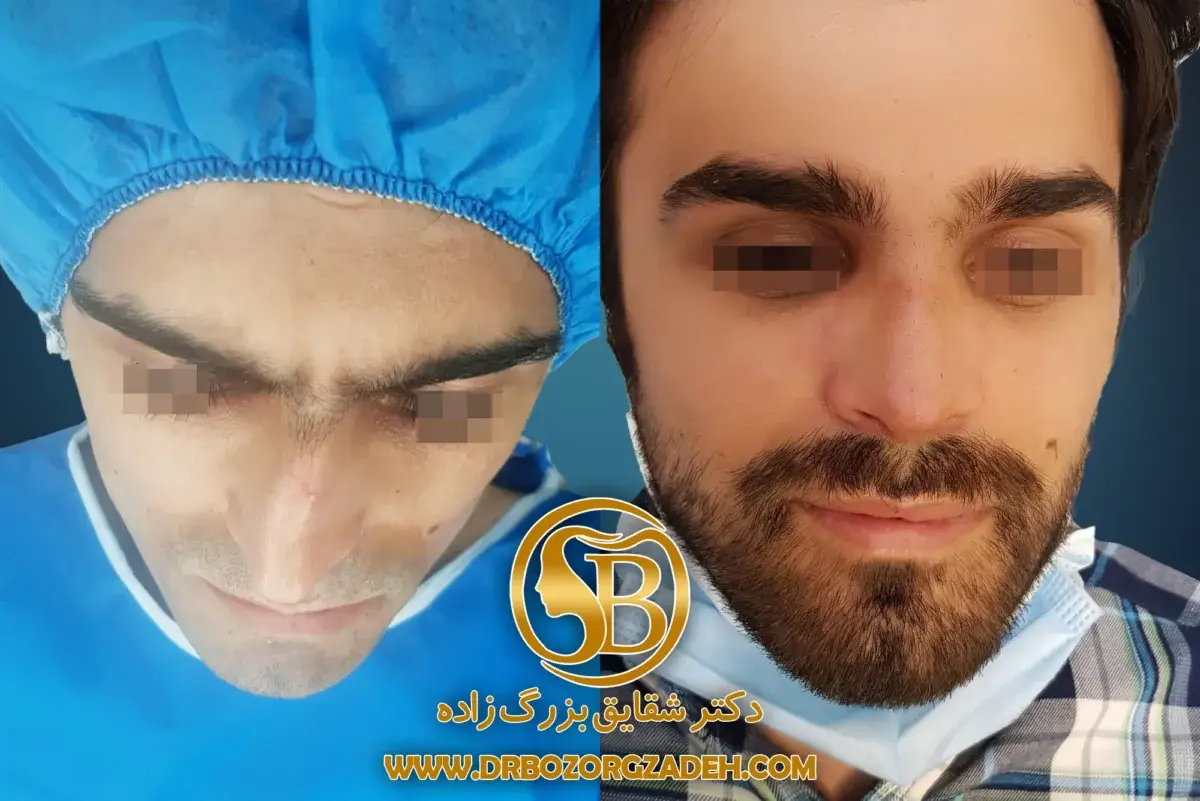The difference between bony and fleshy Rhinoplasty

Written by Dr. Shaghayegh Bozorgzadeh , a maxillofacial surgeon Canada
Rhinoplasty is one of the most common cosmetic procedures, which is divided into two main categories depending on the type of nose structure: bony noses and fleshy noses. Each of these types of noses has different characteristics, challenges and methods for surgery. In this article, we will examine the main differences between bony and fleshy Rhinoplasty .
What is a bony nose?
Bony noses typically have thin skin and a strong cartilage-bone structure.
Bony nose features
- Thin and flexible skin
- The presence of a hump or ridge on the bridge of the nose
- Strong bone structure
Bone Rhinoplasty results
- The ability to achieve precise and delicate results due to the thin skin.
- The changes made are clearly visible.
- Natural and beautiful appearance.
More information about Rhinoplasty in Canada
What is a fleshy nose?
Meaty noses have thick skin and active sebaceous glands, which creates a wide and thick nose tip.
Characteristics of fleshy nose
- Thick skin and active sebaceous glands.
- Weaker cartilage at the tip of the nose.
- Wide and inflexible tip.
Results of meat Rhinoplasty
- The need to strengthen the cartilage to improve the shape of the nose.
- More natural results and not too subtle due to thick skin.
- Less visible changes compared to bony nose.
More information about preservation Rhinoplasty methods in Canada
The main differences between bony and fleshy Rhinoplasty
| Feature | bony nose | fleshy nose |
|---|---|---|
| nose skin | Thin and flexible | Thick and greasy |
| Cartilaginous structure | Strong and firm | Weak and needs strengthening |
| Surgical results | Clearer and more subtle changes | Natural and less visible results |
| Surgical procedure | Focus on removing humps or bumps | Focus on strengthening the cartilage and reducing the size of the tip of the nose |
Rhinoplasty procedures for each type
Bone Rhinoplasty
In bony noses, surgery mostly involves removing the hump, narrowing the bridge of the nose, and correcting the tip of the nose.
Nose Rhinoplasty
For fleshy noses, strengthening the cartilage and reducing the thickness of the skin of the tip of the nose is of great importance. This is done using cartilage grafts.

An image of Rhinoplasty using the preservation method, which is done by preserving the natural structure of the nose. 
An image of Rhinoplasty using a combined method of preservation and extra tip was taken to improve the shape and reduce the volume of the nose.
Care after Rhinoplasty
Observing care points after surgery has a significant effect on the results:
- Using a cold compress to reduce swelling.
- Avoid strenuous activity for a few weeks.
- Taking medications prescribed by a doctor.
Frequently asked questions
Is flesh Rhinoplasty more difficult than bony nose?
Yes, due to thick skin and weak cartilage, Rhinoplasty is more complicated and requires more precision.
Are the results of Rhinoplasty permanent?
By observing post-operative care and choosing a skilled surgeon, the results of Rhinoplasty can be permanent.
Internal links
- Rhinoplasty in Canada ; Everything you need to know
- Introducing the best nose surgeon in Canada
- Book an appointment or call us
External links
- Learn more about Rhinoplasty at the American Society of Plastic Surgeons
- Rhinoplasty Techniques in the International Society of Cosmetic Surgery
conclusion
The fundamental differences between bony and fleshy noses make the surgical methods and results of each different. In order to achieve the best result, choosing a skilled and expert surgeon, such as Dr. Shaghayegh Bozorgzadeh in Canada , plays a very important role.
دکتر شقایق بزرگ زاده
جراح دهان، فک و صورت بورد تخصصی دانشگاه شهید بهشتی مترجم و گردآورنده کتب جراحی فک DDS, OMFS, DHA
